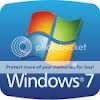Hey. I'm going to be replacing the same motherboard, like for like (faulty). Will i have to reinstall/reactivate, as it's exactly the same mobo or will i just be able to slot it in and windows reinstall the drivers? It's windows 8.1 64bit.
Thanks for any help.
Thanks for any help.



